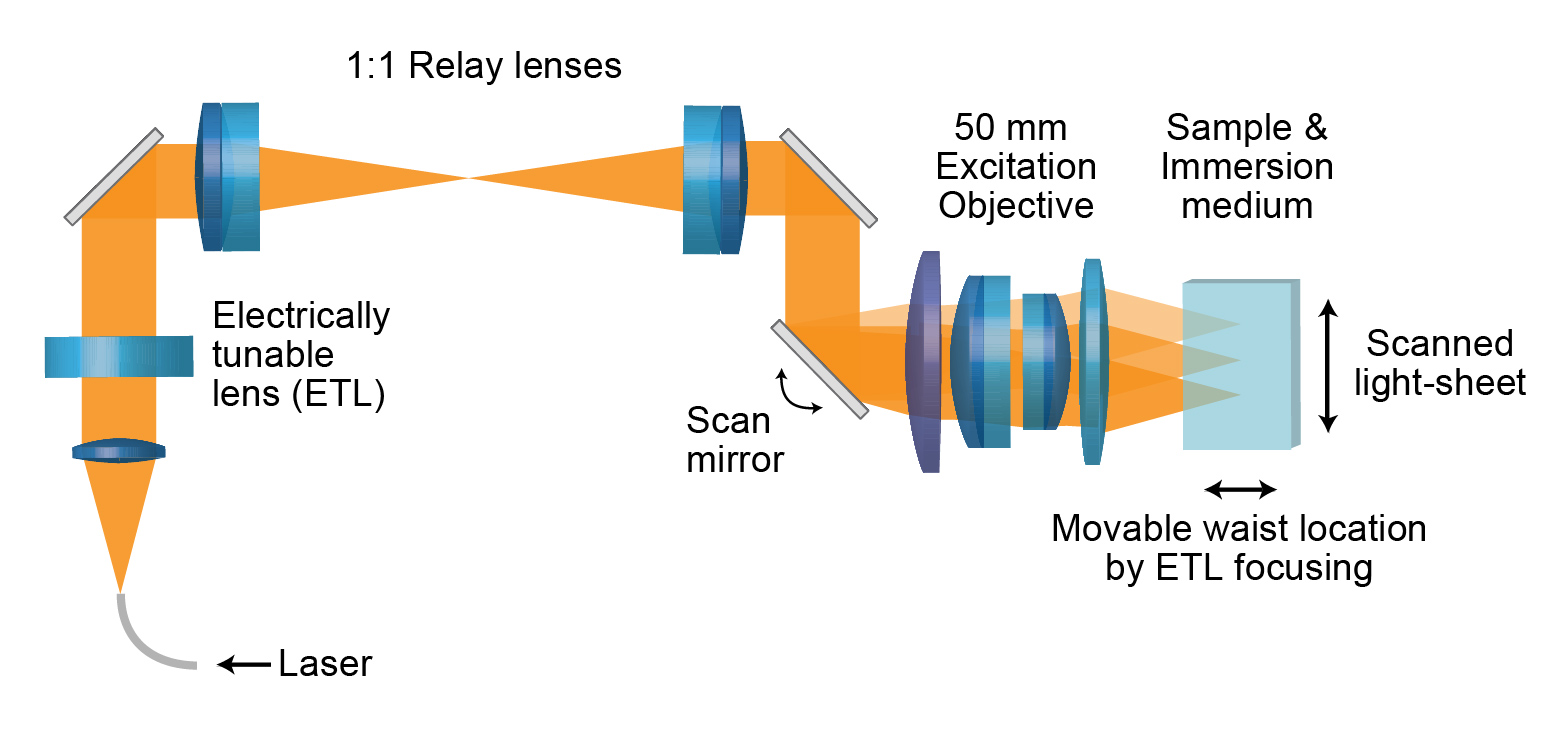-
Notifications
You must be signed in to change notification settings - Fork 4
mesoSPIM_galvo_selection
 Simplified overview of the mesoSPIM excitation arm (several additional fold mirrors
are missing here).
Simplified overview of the mesoSPIM excitation arm (several additional fold mirrors
are missing here).
The mesoSPIM uses a galvo scanner in each arm to create the light-sheet by scanning a Gaussian beam up and down.
The Galvos can be selected for 10 mm or 15 mm beam diameter with the following advantages and disadvantages:
➕ standard diameter for scanners, short delivery times as it is a stock item
➕ higher galvo frequencies possible (i.e. 199 Hz for Zoom 1) which leads to better uniformity of the axial resolution
➖ the mesoSPIM is designed for 15 mm beam size, therefore, using a 10 mm beam will lead to a lower excitation NA (0.1 instead of 0.15) and possibly a marginally thicker light-sheet due to the lower NA
➖ lower NA means slightly worse shadow reduction (the lower the NA, the longer the shadow cone behind absorbing objects)
➕ standard diameter for scanners, utilizes full excitation NA
➕ excellent shadow reduction due to higher excitation NA (see above)
➖ requires custom scanners from Scanlab or Cambridge Instruments with long lead times
➖ needs custom electronics to be built
➖ larger scan mirrors are slower, this can lead to lower feasible galvo frequencies before overheating (i.e. 99 Hz for Zoom 1)
-
Background
- mesoSPIM history
- Optical design
- Electronics
-
Setting up a mesoSPIM
- First steps
- Preparing the software and electronics
- Preparing the microscope optics
-
Setting the microscope up
- General alignment tips and tricks
- Installing the microscope base
- Setting up the detection path
- Alignment of the detection path
- Setup of the sample XYZ stages
- Setup of the excitation path
- Immersion cuvettes
- Set up a microscope config file
- Light-sheet co-alignment
- Set up initial ETL parameters
- Setting up lasers with the GUI
- Sample Handling
- Test Samples
- Troubleshooting
- Upgrades and custom variants